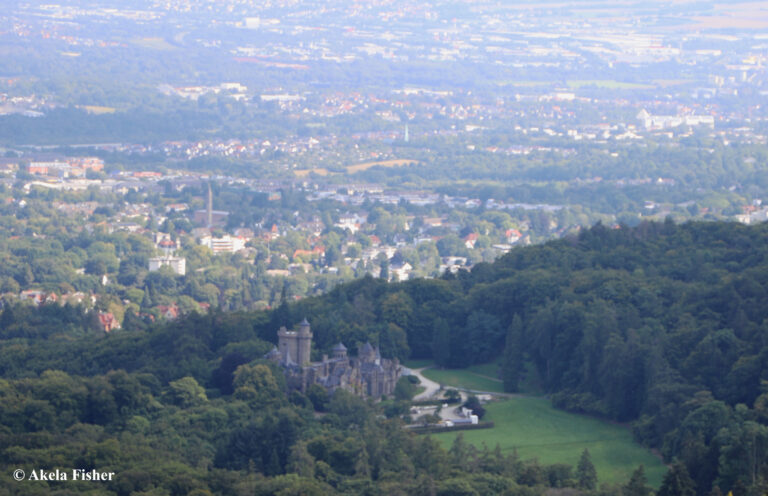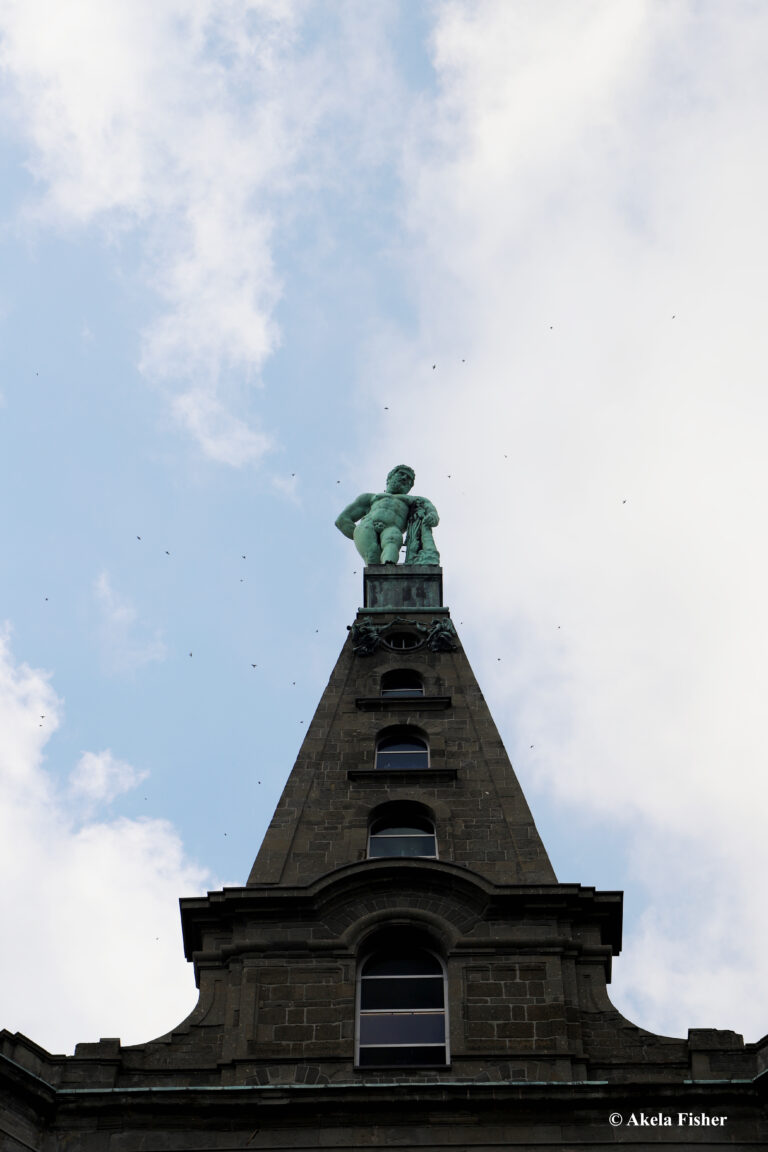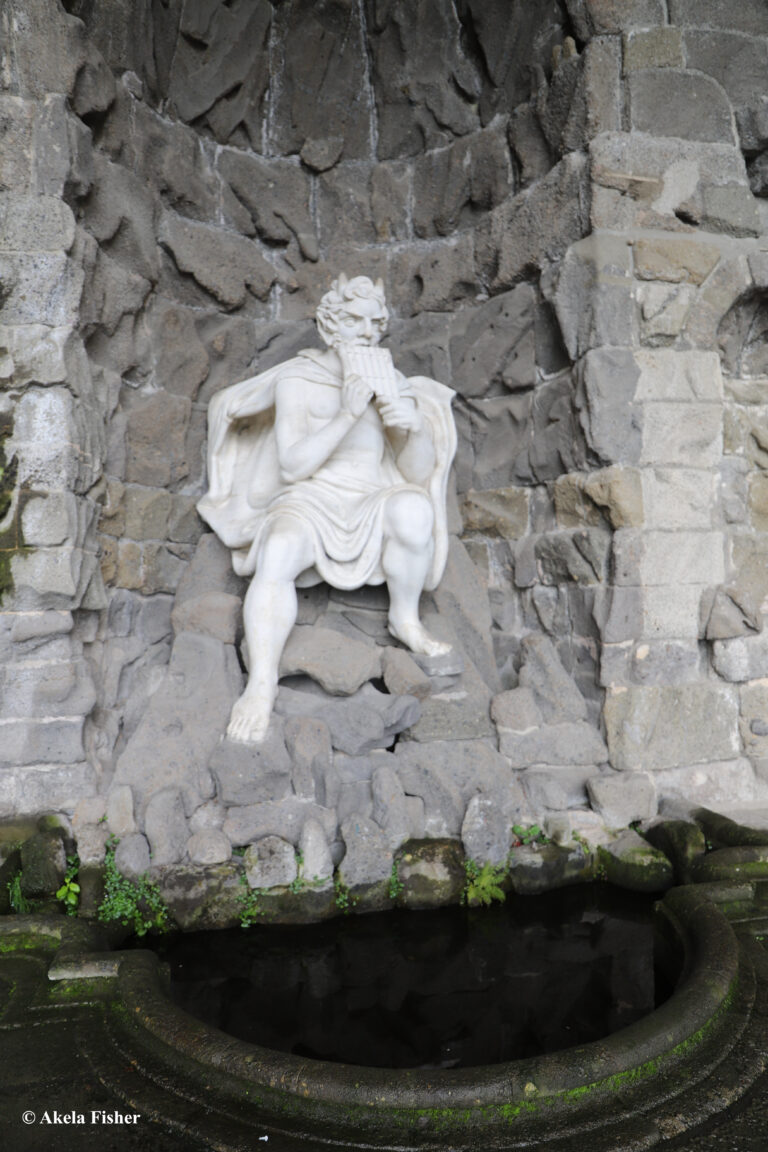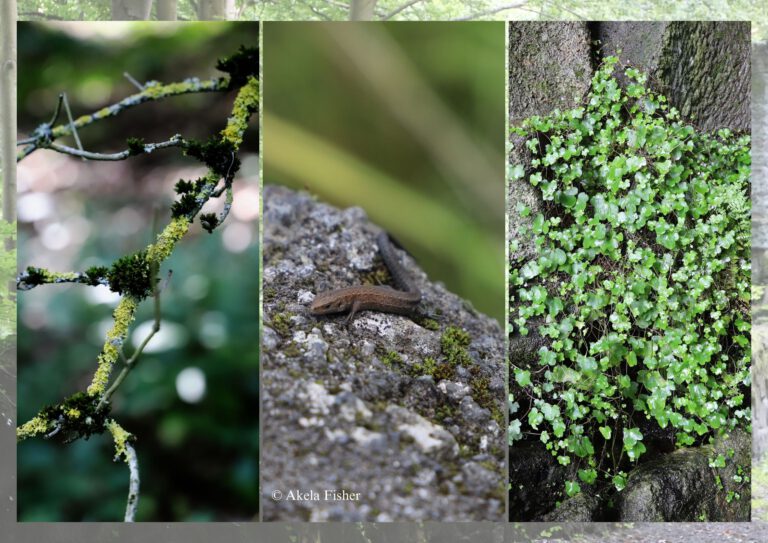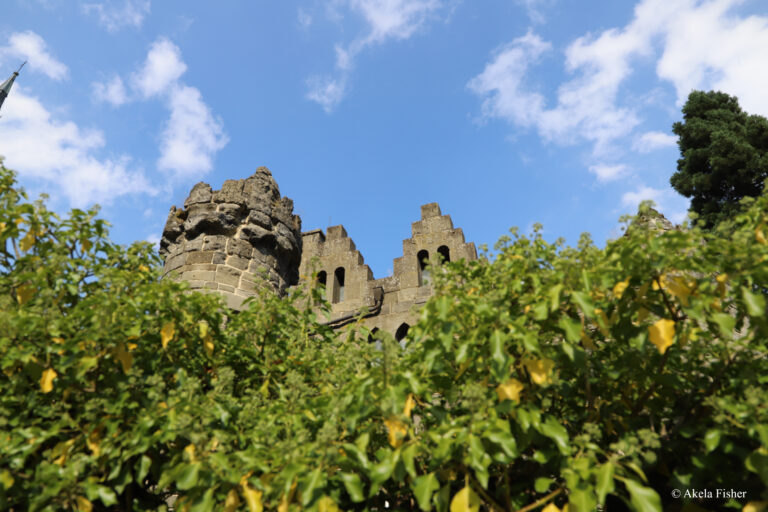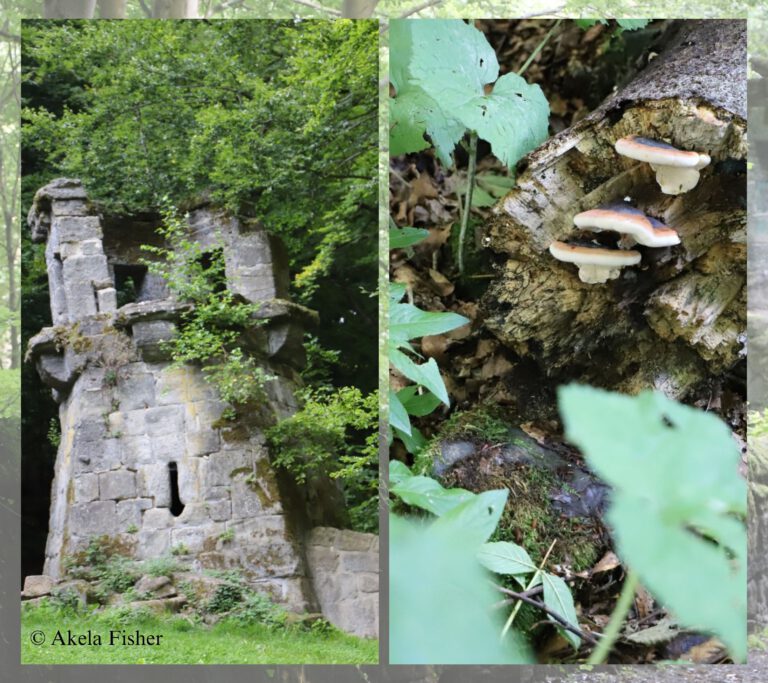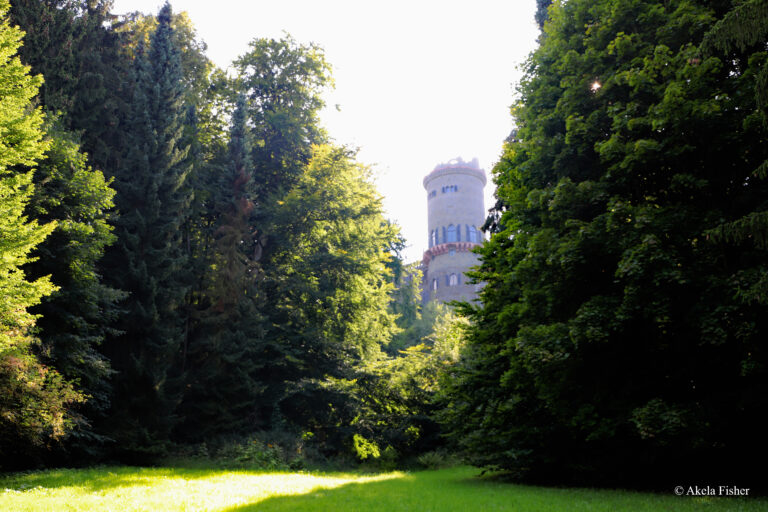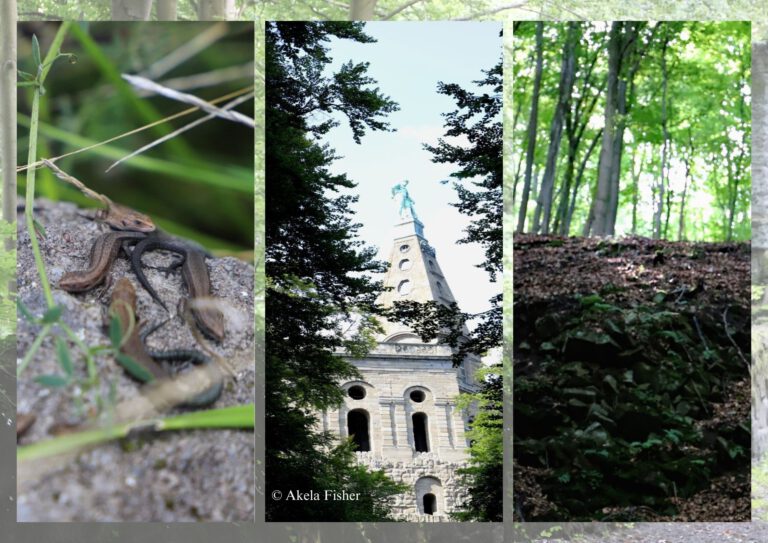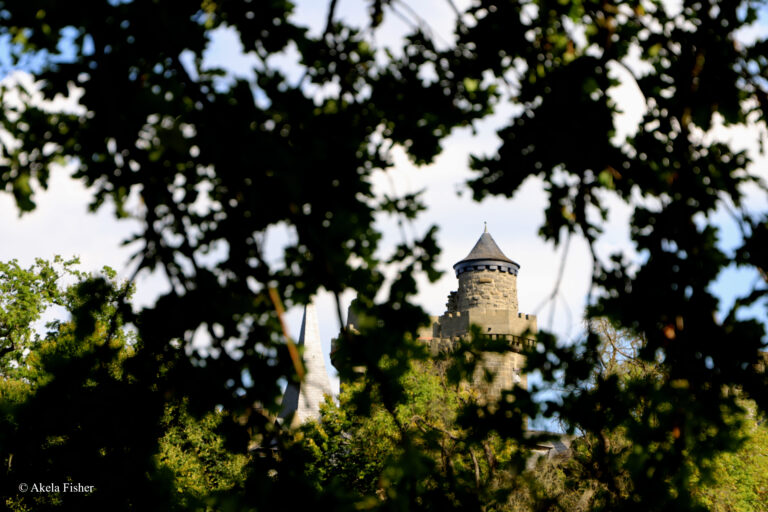The view from the Hercules statue of the Bergpark, the Löwenburg and the city of Kassel.
From 1793 to 1801, Landgrave Wilhelm IX had the Löwenburg built in Bergpark Wilhelmshöhe based on a ruined knight’s castle.
William IX never lived there himself. With its medieval staging, valuable collection items and disguised servants, the Löwenburg was primarily intended to impress its guests. A crypt under the castle chapel serves as Wilhelm’s burial place.
Aussicht von der Herkules Statue auf den Bergpark, die Löwenburg und die Stadt Kassel.
Zwischen 1793 und 1801 ließ Landgraf Wilhelm IX. die Löwenburg nach dem Vorbild der Ruine einer alten Ritterburg im Bergpark Wilhelmshöhe erbauen.
Wilhelm IX. lebte selbst nie dort. Mit ihrer mittelalterlichen Inszenierung, wertvollen Sammlungsstücken und verkleideten Dienern sollte die Löwenburg vor allem ihre Gäste beeindrucken. Eine Krypta unter der Schlosskapelle dient als Begräbnisstätte Wilhelms.
The Hercules statue in Bergpark Wilhelmshöhe.
Over 300 years ago Landgrave Carl chose Hercules as a symbol of his own power. It is one of the oldest structures in the park and is now considered a landmark of the city of Kassel.
A rock-like grotto lies at the foot of the statue. The famous water features start from there. Unfortunately, I haven’t been able to see them yet, because every time I’ve been there, the features haven’t taken place for various reasons.
Die Herkules-Statue im Bergpark Wilhelmshöhe.
Vor über 300 Jahren wählte Landgraf Carl Herkules als Symbol der eigenen Macht. Die Statue ist eines der ältesten Bauwerke im Park und gilt heute als Wahrzeichen der Stadt Kassel.
Am Fuße der Statue befindet sich eine felsenartige Grotte. Von dort beginnen die berühmten Wasserspiele. Leider konnte ich sie noch nicht selbst sehen, denn jedes Mal, wenn ich dort war, fanden sie aus verschiedenen Gründen nicht statt.
Pan sits in the grotto. The true to the original replica of the old water organ is hidden behind him. It has been sounding again since 2020. On June 23, 2013, the Bergpark was declared a UNESCO World Heritage Site. You can stroll through the park for a very long time and discover lots of interesting things. For example, Wilhelmshöhe Palace, greenhouses, the Cestius Pyramid, the Temple of Mercury and the Pluto Grotto.
In der Grotte sitzt Pan. Hinter ihm verbirgt sich der originalgetreue Nachbau der alten Wasserorgel. Seit 2020 erklingt sie wieder. Am 23. Juni 2013 wurde der Bergpark zum UNESCO-Weltkulturerbe erklärt. Man kann sehr lange durch den Park schlendern und dabei viel Interessantes entdecken. Zum Beispiel das Schloss Wilhelmshöhe, Gewächshäuser, die Cestius-Pyramide, den Merkur-Tempel und die Pluto-Grotte.
